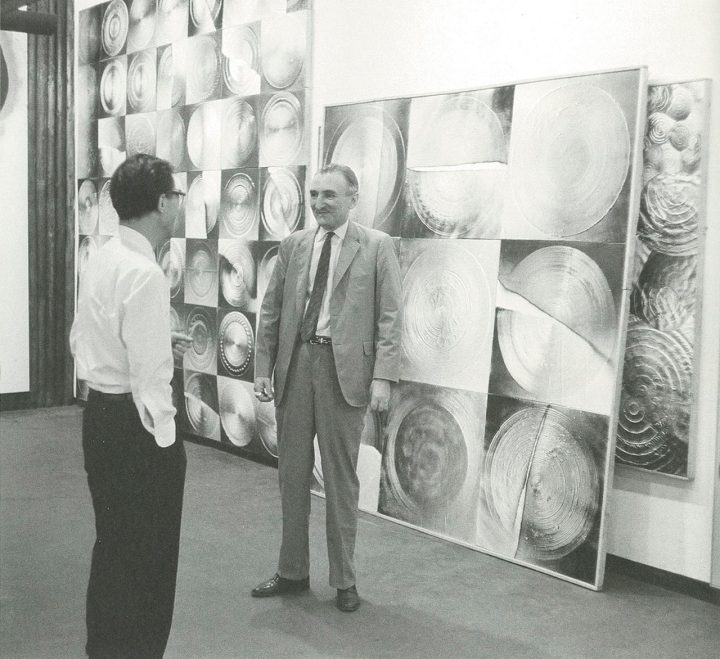“Gutai Art is the product that has arisen from the pursuit of possibilities. ···
It is our desire to embody the fact that our spirit is free. It is also our hope that no restrictions will be placed on the desire to experience fresh sensations through every form of expression,”
from Gutai Art Manifesto’.
Background
“Gutai”, officially known as Gutai Art Association, is the first radical, post-war artistic group in Japan. Founded in 1954 with the aim to go beyond abstraction and pursue enthusiastically the possibilities of pure creativity, they emphasized that Gutai art does not alter matter but rather speaks of the delicate interaction between spirit and matter that ultimately enables art to tell a story.
The name “Gutai” was meant to “present concrete proof that our spirit is free.” “Sprit” was considered to be specific to each individual but also an abstract entity. Gutai was formed by a collection of young artists led by Jiro Yoshihara. Under this charismatic leader, a group of young artists cheerfully challenged the boundaries circumscribing traditional art works.
Evolution
With the celebrative and challenging spirit of Gutai, many of Gutai’s early works were more focused on performance, large installation and happening. Tearing paper (Saburo Murakami), muddling paint with feet (Kazuo Shiraga), throwing bottles of paint (Shozo Shimamoto), wearing a dress made of electric bulbs (Atsuko Tanaka), etc, characterized “Gutai”, the art movement reflecting the freedom of postwar society contradicted to totalitarian during wartime.
From early 1960s, the focus of Gutai gradually moved to more two-dimensional works coinciding the opening of Gutai Pinacotheca, an exhibition space for not only Gutai artists but also for notable western artists including Lucio Fontana, Guiseppe Capogrossi and Sam Francis. The second-generation of Gutai, Yuko Nasaka, Tsuyoshi Maekawa, Shuji Mukai and Takesada Matsutani created their signature works by making use of unconventional materials and tools, actively participated in exhibitions held in Gutai Pinacotheca.

15th Gutai Art Exhibition’, Gutai Pinacotheca, Osaka, 1965
Left: Jiro Yoshihara, Right: Michel Tapié
Gutai’s leader Jiro Yoshihara relentlessly demanded to the members to create art unlike any that had ever existed in the past. He also organized exhibitions to show their work in parks, on stage and in the sky in hopes of encouraging them to generate new ideas free of the existing framework of art. The group was highly acclaimed abroad and the name “GUTAI” came to be widely recognized in the Western art world from the late ’50s. And the very spirit is still alive along with the artists who fearlessly followed their leader even after the group’s dissolution in 1972.
After “Gutai”
he Gutai group started to gain more public recognition after a ground-breaking exhibition at New York’s Guggenheim Museum in 2013, following several important museum and gallery shows such as ‘Tokyo 1955-1970: A New Avant-Garde,’ at the Museum of Modern Art in New York, and ‘Destroy the Picture: Painting the Void, 1949-1962’ at LAMOCA. Art market has also recognized the importance of this post-war art movement and organized special exhibitions and sales such as ‘Avant Garde Asia: Gutai and its Legacy’ at Sotheby’s Hong Kong, March 2015 and ‘Full Circle – Yoshihara Jiro Collection’ at Sotheby’s Hong Kong, October 2015.